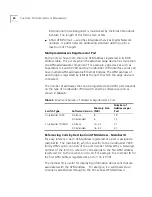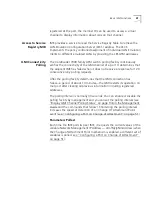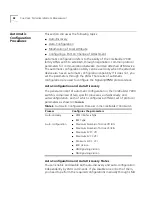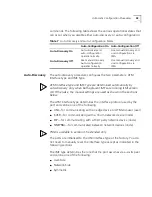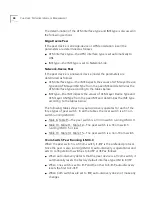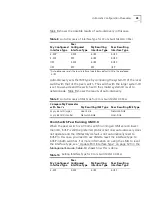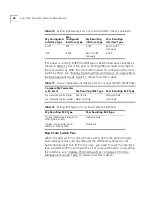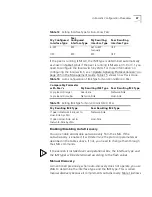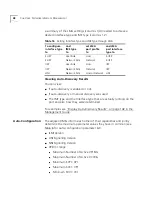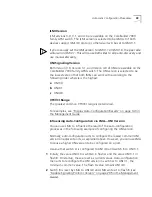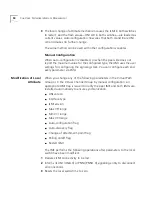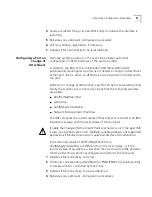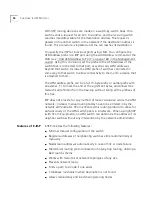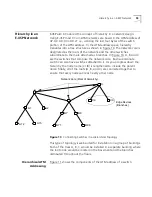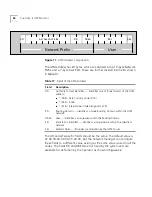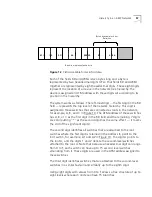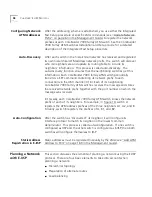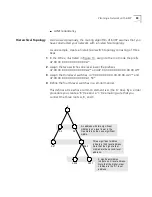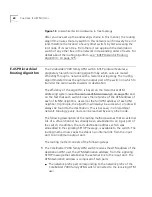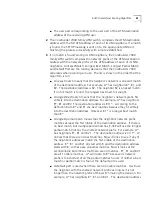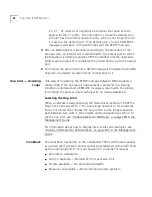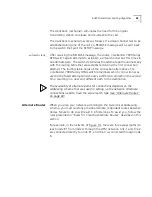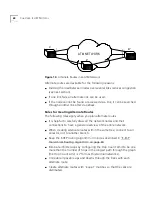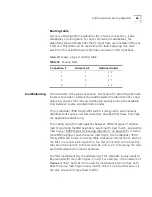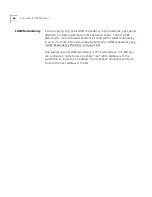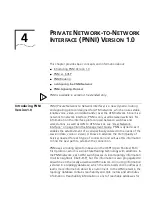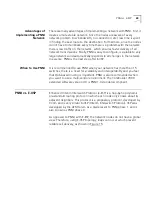
54
C
HAPTER
3: E-IISP P
ROTOCOL
With IISP, routing decisions are made on a switch-by-switch basis. One
switch sends a request for an SVC to another, and the receiving switch
searches its address table for the destination address. The request is
passed on to another switch in the network if the destination address is
found. This procedure is repeated until the call reaches its destination.
You specify the IISP for individual ports using LMA. You configure the
ATM address prefix in a IISP port using the Add Address command of the
LMA (see “Add ATM Address to Port” on page 160 in the Management
Guide). Using this command, set the prefix to the ATM address of the
switch that is connected to that port, as well as any ATM addresses
beyond that switch. Include the ATM prefix of switches connected in
some way to that switch to allow connectivity to them or to a device that
is attached to them.
The ATM address prefix can be a full 13-byte prefix or partial prefix with
an asterisk (*) to mark the end of the significant bytes, and allows tree
hierarchical definition from the tree-top without listing all the prefixes of
this tree.
IISP does not provide for any method of route calculation across the ATM
network. Instead, manual routing tables have to be entered in by the
network administrator. 3Com enhanced this routing protocol to allow for
auto-discovery of the ATM switch peers in a network. When using E-IISP
(with 3Com Equipment), an ATM switch can determine the address of its
neighbor switch without any intervention by the network administrator.
Features of E-IISP
E-IISP includes the following features:
Minimal manual configuration of the switch
Registers addresses of neighboring switches either automatically or
manually
Nodes learn addresses automatically in case of link or node failure
Hierarchical routing protocol based on hop-by-hop routing, utilizing a
best match
scheme
Works with hierarchical network topologies of any size
Prevents network loops
Finds a path to a node if one exists
Crankback mechanism when destination is not found
Allows redundancy and load sharing among nodes
Summary of Contents for CoreBuilder 7000
Page 12: ......
Page 30: ...30 CHAPTER 1 ATM NETWORK BASICS...
Page 32: ...32 CHAPTER 1 ATM NETWORK BASICS...
Page 34: ...34 CHAPTER 1 ATM NETWORK BASICS Figure 8 LANE Network over WAN...
Page 96: ...96 CHAPTER 4 PRIVATE NETWORK TO NETWORK INTERFACE PNNI VERSION 1 0...
Page 184: ...184 CHAPTER 7 LAN EMULATION VERSIONS 1 0 AND 2 0...
Page 206: ...206 CHAPTER 9 DEVICE MANAGEMENT...
Page 222: ...222 APPENDIX A TECHNICAL SUPPORT...
Page 234: ...234 APPENDIX B PROTOCOLS AND INTERFACES...
Page 238: ...238 APPENDIX C COREBUILDER 7000 FAMILY ATM SWITCH SPECIFICATIONS...
Page 242: ...242 APPENDIX D SAFETY INFORMATION...

